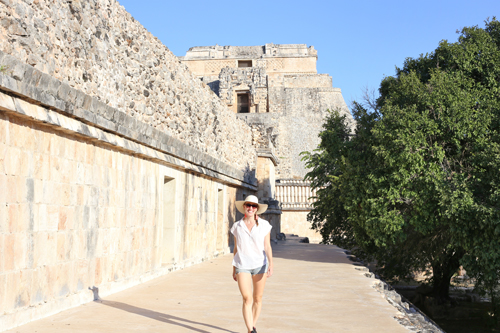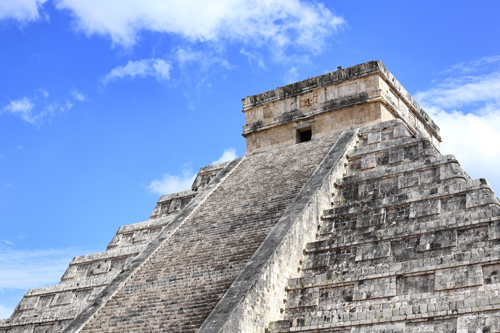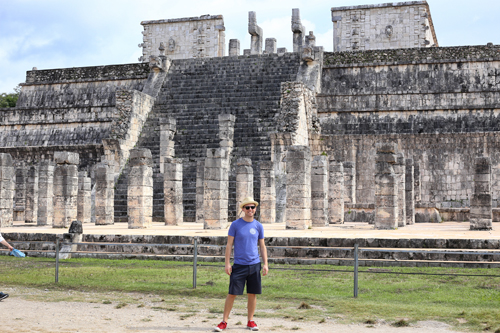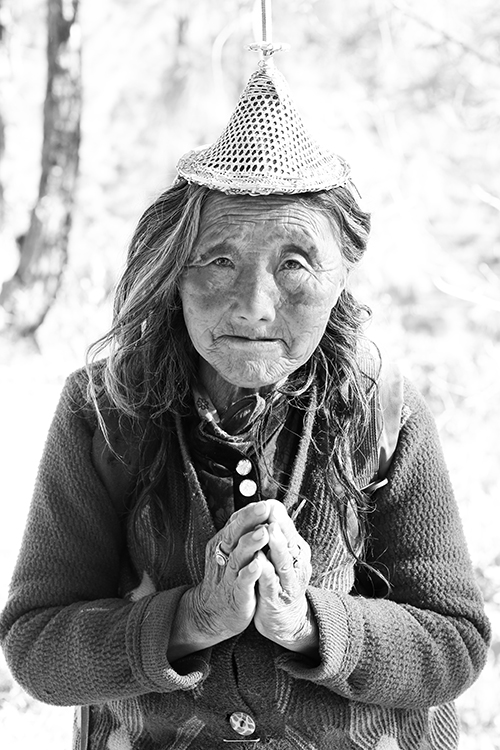
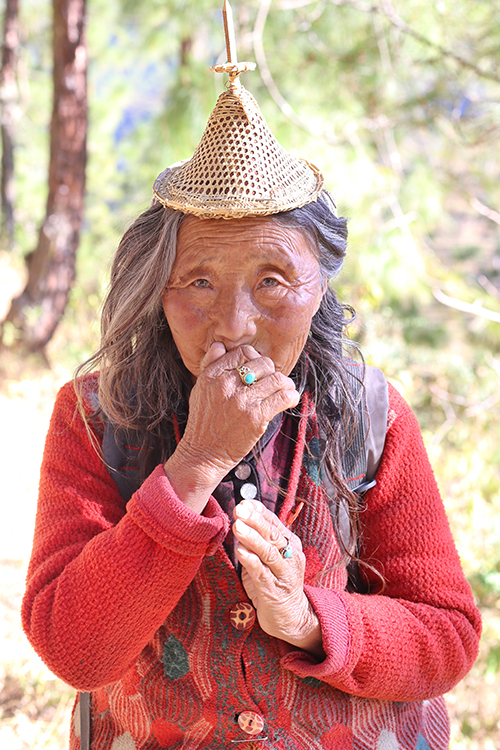

it's 40k kilometers around the world's circumference


Thimphu is littered with dogs, high off the knowledge that no one will do them harm. “That dog”, they say, “could be your mother from a past life.”


Bhutan is a deeply Buddhist country, with an unapologetic tie between church and state. Urbanization is moving people from the countryside into the overcrowded and rapidly developing city of Thimphu, now the size of Burlington, Vermont. The city itself is very safe, far more than San Francisco. We don’t clutch our bags or eye every stranger. In Bhutan there is only petty theft, one of the few countries in the world with no US State Department warning. Here, the police don’t carry guns. Those who own a weapon own a compound bow, but it’s not a weapon any more than a hockey stick in Canada; Archery is the national sport. There is free healthcare for all, free education for all, and any semblance of a foster care system is replaced by government-funded monasteries and nunneries. Surely it can be argued that it’s wrong to force religion on children, but instead of being passed from home to home until the age of 18, Bhutanese children are given a purpose, a means of making money, and a deeply respected place in society. There are road signs that curiously read “Thanks”. Just thanks, without explanation. Even the more threatening signs about drinking and driving or speeding are transformed into cutsie one-liners. “If you’re married, divorce speed.” It’s not naiveté; it’s that there’s no need.
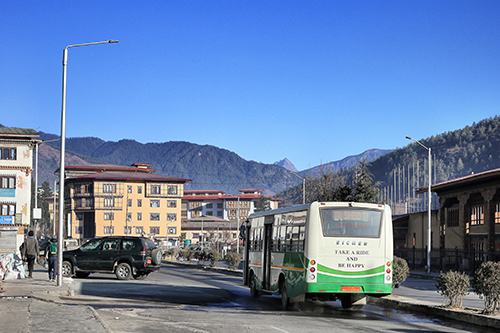


Bhutan is a communal culture where that, perhaps because of the strong Buddhist influence, people have seemingly silently agreed to respect one another. As a sign of unity, Bhutanese people wear a national uniform. There’s an attitude that life isn’t to be won; it’s to be lived together. But with TV, Internet and a currency (all new for Bhutan), the major city in the land of happiness is no longer free from the trappings of the modern world. As our guide explained to us, Buddhism teaches contentment and the idea of enough, but of course it’s only human to want what others have. Bhutan, we realize, is stuck between the desire to preserve a culture and identity, and the desire to benefit from the modern world, even when the two seem to stand in stark contrast with one another. As we reflect on what Bhutan used to be – something perhaps more closely resembling the happiness for which they’re known – it’s important not to idealize the past. The “good old days” brought with it its own set of problems. And so we move through Thimphu, visiting chortens where people endlessly spin prayer wheels and then get back into our car while the Thimphu City Thugs play on the radio.

“And if you hit upon the idea that this or that country is safe, prosperous, or fortunate, give it up, my friend… for you ought to know that the world is ablaze with the fires of some faults of others. There is certain to be some suffering… no safe refuge can thus be found in the world.” – Buddhist scriptures

We land in Bhutan on a Tuesday, and although we are not ones to seek out lots of drinks when we travel, I do appreciate a local brew and Lindsey a specialty cocktail. However, because it is Tuesday and therefore a legally enforced dry day of the week, we’ll have to wait.
Naturally, we wonder why there is such a seemingly arbitrary law. We ask around, and as we suspect, alcoholism is a serious problem. In 2017, alcohol became the top killer in Bhutan. The highest numbers of hospital cases are alcohol related, and many more of those who lose their lives because of alcohol are undocumented in rural villages. This leads to another question that we can’t yet answer: why in a country known for being so happy is alcoholism such a problem?
On a lighter note, as part of alcohol/bar culture, the Bhutanese play Snookers. There are places to play throughout Thimphu. Our guide challenges us to a game, we can’t refuse and find ourselves in a basement bar being heckled by 10 year olds who aren’t impressed with our abilities. Having played pool before, playing snookers feels like playing basketball with larger balls and smaller rims. In other words, it feels like I should be better, should know what I’m doing, should have some technique down, but nothing seems to work because the game is just no longer as forgiving as it used to be.
Tuesday does eventually become Wednesday, and on Wednesday, we head to Mojo Park just down the street to taste some local classics like Druk and Red Panda (a wheat beer), both satisfying. Lindsey tries a local vino called Vintria – turns out Bhutanese wine is just okay, but we still appreciate that they have the option.
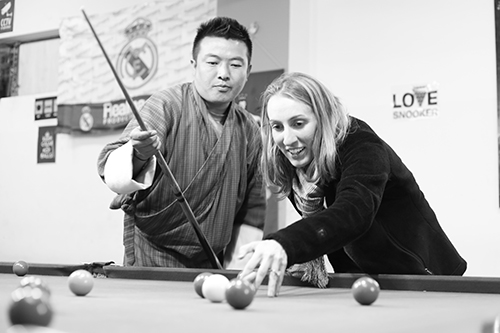
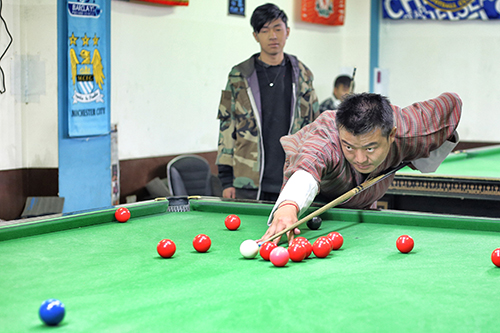
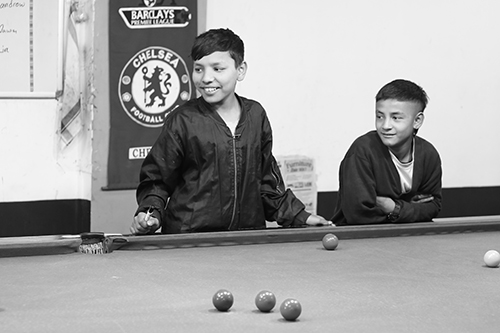
We love debating our next destination. Figuring out how to balance all that we might want out of a trip – adventure with culture, good food with new food, convenient timing with favorable weather, popular with obscure, and cityscapes with nature. So why Bhutan?
We selfishly and semi-ironically want to see a culture untainted by the West while at the same time bring with us all of our ideals, clothes, tastes, and biases. We want to visit a culture that still resembles how it might look if the influences of TV, media, super brands, and western fashion had never infiltrated. We think we might come closer with Bhutan.
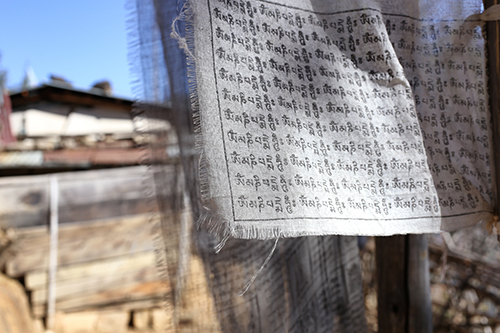
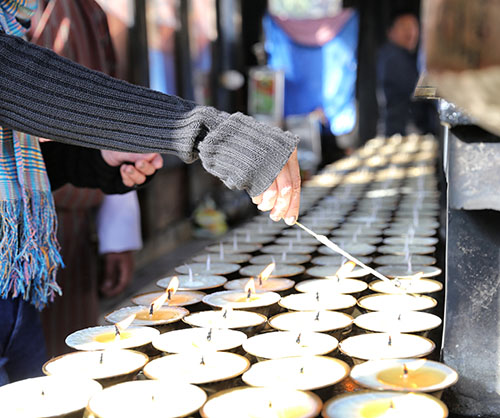
It’s a country that didn’t “modernize” until the 1960s. A country that didn’t have TV until 1999. A country that opened up its doors to foreign tourists in 1974, but even through today has very few come visit each year. A country that believes in Gross National Happiness before Gross Domestic Product. A country that is home to the highest unclimbed mountain. A country with a capital city without a traffic light (they tried and took it away). A country with a name that translates to “land of the thunder dragon.” It’s impossible to be untouched by Westerners and for us to still be going, but without a McDonald’s or Starbucks, it at least comes close to having some of that authenticity we seek.
In addition, as it has been engrained in all Americans through the Declaration of Independence, I’m a little obsessed with the idea of the pursuit of happiness. Bhutan, with its Gross National Happiness, is supposed to be incredibly happy. Did they have to pursue it to get there? Are they actually happy? Does happiness mean the same thing across all cultures and languages? These are just a few of the happiness-related questions I’d have.
And finally, it’s beautiful. Nestled in the Himalayan mountains, no path will be flat, all will be either up or down. Like the culture, the people, and their happiness, their terrain will be forever interesting. We have so much to learn, live and love about Bhutan, and we look forward to exploring.
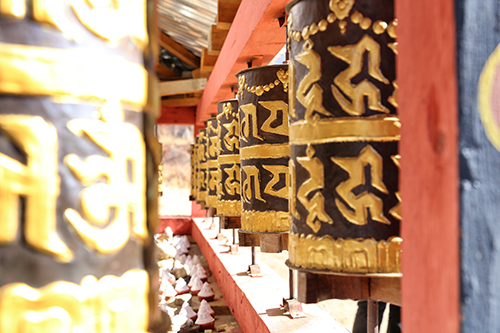
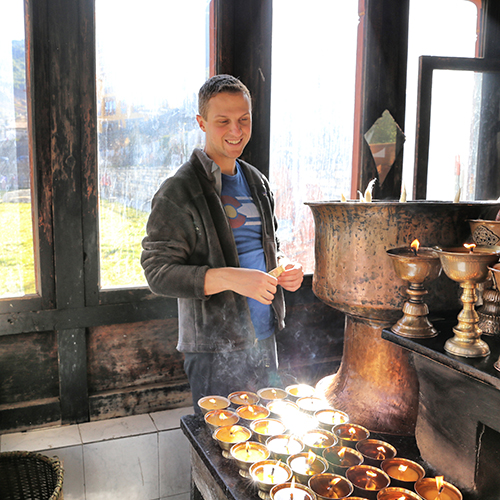
“The control measures on the Rohingya expanded and tightened as time went on, and by 2016, 86 checkpoints had been set up in northern Rakhine State. The routine stop-and-search of vehicles to check for Rohingya passengers greatly amplified the perception of the group as a security threat. This in turn fed the narrative, made so explicit by their denial of citizenship in 1982, that they were a lesser people. The process of distinguishing them so drastically from other groups in Rakhine State, not only in a religious or ethnic sense, but now legally, criminally, would provide more robust grounds for the violence that eventually erupted in 2012. They weren’t worthy of the same protections afforded to Rakhine, limited as those were, and they became, in the eyes of those who either participated in attacks or supported them from afar, subhuman. They were animals, stripped of the qualities that normally inhibit the use of violence against a fellow human being.”
-Francis Wade in Myanmar’s Enemy Within: Buddhist Violence and the Making of a Muslim ‘Other’
We bought flights for a late December trip to Myanmar back in April. Myanmar had been on our list for a while, and I was thrilled to find great tickets. We were attracted by its beautiful landscapes, less touristy vibe, and unique culture, but through the summer, the Rohingya crisis escalated, and we faced an ethical problem of whether or not to go. Whether it should be called an ethnic cleansing or genocide didn’t matter, the fact is that the Myanmarese were committing atrocities against the Rohingya, and we didn’t feel fully comfortable condoning this behavior by touring there.
Before deciding either way, however, we weigh the options. We recognize that this trip to Myanmar won’t be all smiles, and some of the learnings we may get from this adventure will teach us how a culture can sub-humanize another culture. We could learn how a population can be so marginalized that even “good” people view them as a threat to society. On the other hand, do we want to support a country through our tourist dollars that is systematically pushing out and eradicating another group just because they have differing beliefs? We realize that our own government is pushing out ‘other’ as well as not letting them into the country for reasons not terribly different from that of the Myanmarese; however, at least for now, the degree to which the U.S. government is willing to go is not as extreme.
The biggest surprise is that we felt that Myanmar was improving. Back in 2012, President Obama visited Myanmar, and he praised the government’s progress in shaking off military rule. Just a couple years later, things seem as bad as they’ve ever been. Clearly, in 2012, a lot of the story was missing. As highlighted in the quote above, it takes half a century to develop these deep-rooted feelings against an ethnic group. In a time of fake news and tampered elections, I’m embarrassed that I believed what I had been reading about Myanmar on its surface – that it was on a good path forward. I believed what I wanted to believe. I wanted to visit this beautiful country and I wanted it to embody the transformation story that was being shared. I was wrong.
To go or not to go? In the end, we just couldn’t. We heard our rationales starting to sound like excuses. We were never worried for our safety because we didn’t look or believe in anything that was controversial, but that doesn’t mean we should then feel okay going – just because we weren’t going to be in danger. We still wanted to go to a similar part of the world, but we wanted to support a nation where we felt comfortable in the actions that the government and their people were taking. We wanted to go to a nation where we were felt proud to emulate many of their traditions and beliefs. And we wanted to go to a nation that we felt excited to support.
It was back to the drawing board for us, but with one caveat – if possible, where could we go so that we wouldn’t lose the full deposit that we’d already put down on Myanmar…
In trying to understand what was happening, I feel Wade’s book “Myanmar’s Enemy Within” does a nice job of explaining how today’s situation came to be.
Visiting Campeche’s old quarters is like stepping back into the past. This might be because as a UNESCO world heritage site, the area needs to look and feel like it did back in the mid 16th century soon after the Spanish began the conquest of the Yucatan Peninsula. The best part of UNESCO sites are that they seem beautifully authentic, even if they are anything but. And even if they are just facades, they do transport us. Sometimes a little imagination and some turning off of skepticism can make the world seem brighter, and in fact, in Campeche, by allowing ourselves to be transported back in time, the walls that line the streets do seem more colorful. On top of all this, although a bit Disneyland-esque, when the clock strikes 8pm, there is an entertaining light show accompanied by playful music in the main plaza of the old quarters. Both locals and tourists come to the square to partake.



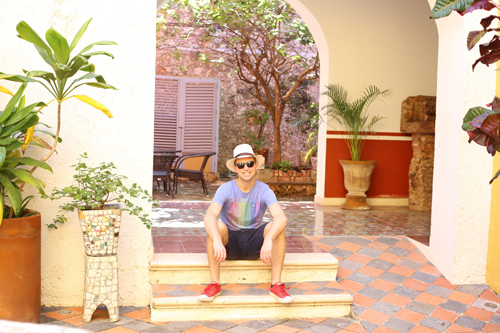
One of the highlights in Campeche happens just before sunset while we enjoy a ceviche cooking class. We learn to make several varieties of ceviche, and throughout, we get to taste many other dishes of the region – panuchos, salbutes, sopa de lima, and more. The scene romantic, the food fresh, the drinks smooth, and the evening warm, we wonder the typical question leaving any cooking class: They made that seem so easy, so what are the chances we can reproduce this back home? The answer is maybe, but taste is only one part of an experience and reproducing all in its entirety will be nearly impossible. Thus, we make sure to cherish and love the moment while here.


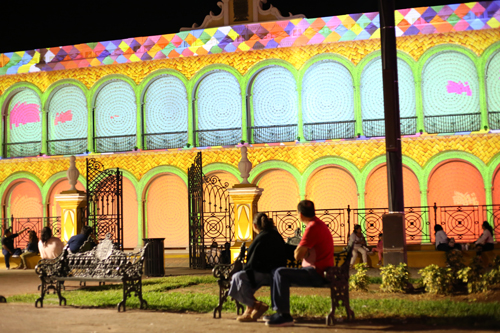
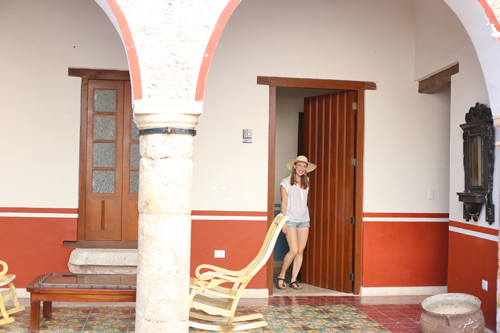
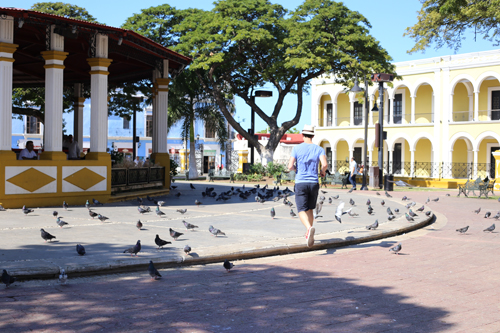


Leading up to and during the trip throughout Mexico, I enjoy reading Don Winslow’s two books on El Chapo, “The Power of the Dog” and “The Cartel”. Although fiction, there is also a strong tie to truth throughout. In thriller fashion, the books include violence, drugs, sex, scandal, criminals and cops. But I also appreciate how many “normal” citizens they include that were trapped in the crosshairs of this war on drugs. The passage that spoke to me the most was from the second book, “The Cartel”, and it was written by a journalist who felt completely trapped by his circumstance. I’ve copied it below:
I speak for the ones who cannot speak, for the voiceless. I raise my voice and wave my arms and shout for the ones you do not see, perhaps cannot see, for the invisible. For the poor, the powerless, the disenfranchised; for the victims of this so-called “war on drugs,” for the eighty thousand murdered by the narcos, by the police, by the military, by the government, by the purchasers of drugs and the sellers of guns, by the investors in gleaming towers who have parlayed their “new money” into hotels, resorts, shopping malls, and suburban developments.
I speak for the tortured, burned, and flayed by the narcos, beaten and raped by the soldiers, electrocuted and half-drowned by the police.
I speak for the orphans, twenty thousand of them, for the children who have lost both or one parent, whose lives will never be the same.
I speak for the dead children, shot in crossfires, murdered alongside their parents, ripped from their mothers’ wombs.
I speak for the people enslaved, forced to labor on the narcos’ ranches, forced to fight. I speak for the mass of others ground down by an economic system that cares more for profit than for people.
I speak for the people who tried to tell the truth, who tried to tell the story, who tried to show you what you have been doing and what you have done. But you silenced them and blinded them so that they could not tell you, could not show you.
I speak for them, but I speak to you – the rich, the powerful, the politicians, the comandantes, the generals. I speak to Los Pinos and the Chamber of Deputies, I speak to the White House and Congress, I speak to AFI and DEA, I speak to the bankers, and the ranchers and the oil barons and the capitalists and the narco drug lords and I say—
You are the same.
You are all the cartel.
And you are guilty.
You are guilty of murder, you are guilty of torture, you are guilty of rape, of kidnapping, of slavery, of oppression, but mostly I say that you are guilty of indifference. You do not see the people that you grind under your heel. You do not see their pain, you do not hear their cries, they are voiceless and invisible to you and they are the victims of this war that you perpetuate to keep yourselves above them.
This is not a war on drugs.
This is a war on the poor.
This is a war on the poor and the powerless, the voiceless and the invisible, that you would just as soon be swept from your streets like the trash that blows around your ankles and soils your shoes.
Congratulations.
You’ve done it.
You’ve performed a cleansing.
A limpieza.
The country is safe now for your shopping malls and suburban tracts, the invisible are safely out of sight, the voiceless silent as they should be.
I speak these last words, and now you will kill me for it.
I only ask that you bury me in the fosa comun—the common grave—with the faceless and the nameless, without a headstone.
I would rather be with them than you.
And I am voiceless now, and invisible.
I am Pablo Mora.
On our way from Celestún to Campeche, we learn of a city named Becal known for its panama hat trade, so we drive to the central plaza to investigate. Getting more adept at navigating our rented Ford Aveo through the pot holes and speed bumps, we arrive at the plaza in front of the main church and then aren’t sure what our next move is.
Like a lost child entering a large room and moving our gaze constantly, we are all but asking for someone to come up and try to sell us something. And within seconds while still in the car, someone tries to get us to roll down our window like it’s a fast food restaurant or something. We don’t, but this guy is persistent. He gets on his motorbike with a wooden love seat attached to the front and starts following us around the square. If the bike didn’t look so ridiculous, I might have thought that we had a tail. But, we slow down, and the bike/love-seat pulls up alongside us, we size him up as small, friendly and mostly harmless, and open our car window.
His first question is if we’re looking for hats. Are we that obvious? And yes, we are, and we read online that this is how hats are sold in Becal. There are no storefronts, no vendors in the plaza, just folks waiting to take you to where the hat-making magic happens. We follow this friendly man in the safety of our Aveo and we pull up to a modest, clean home where we learn how panama hats are made from plant to finish. We also learn this is a family affair with many generations involved. They are like a hat mafia, but instead of running organized crime, they’re in the business of beautifully crafted headwear.
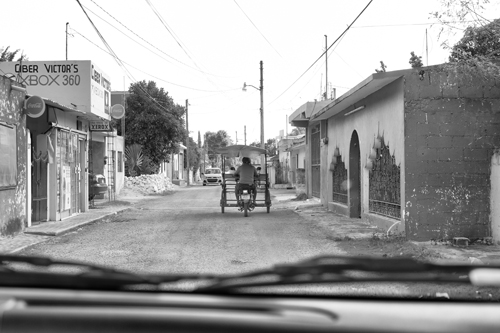
We learn of quality differences between hats ranging from $5 to $300 USD. I am clearly skeptical that such a range exists and that the most expensive of hats actually take a month to fabricate, but after trying them on and feeling them, I can differentiate. The highest quality feels very smooth, almost like a soft fabric; it sits better on our heads, and it even looks better. So we agree that there’s no reason to get the most expensive, but there’s also decent rationale not to go for the cheapest. After a little bargaining, we walk away very happy customers with a new sombrero each.
Becal is legit: Many locals make their living weaving these jipijapas (the panama hats). The best hats are then exported to connoisseurs in foreign cities. Now, we know a guy who makes panama hats in Mexico in case that ever becomes useful.

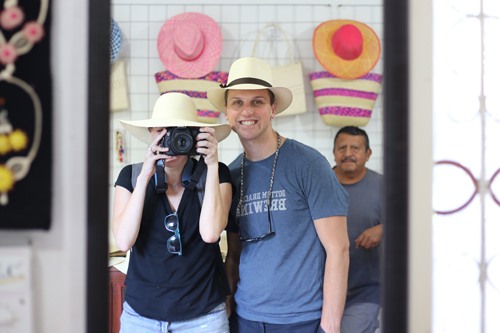
The Yucatan was full of moments as we explored the sites from cenotes to dry caves to small towns.
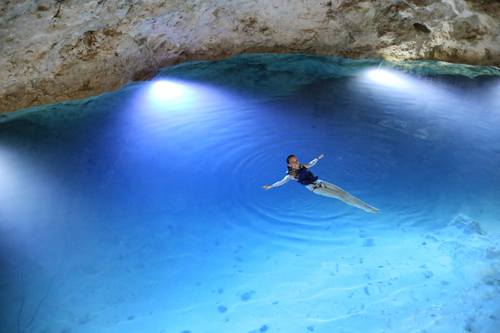
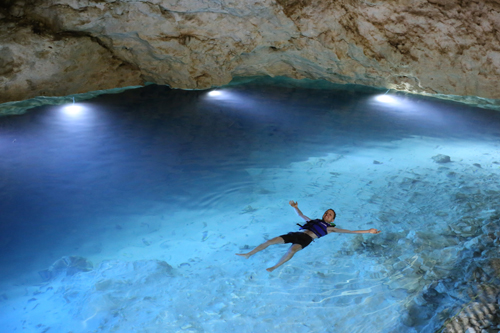
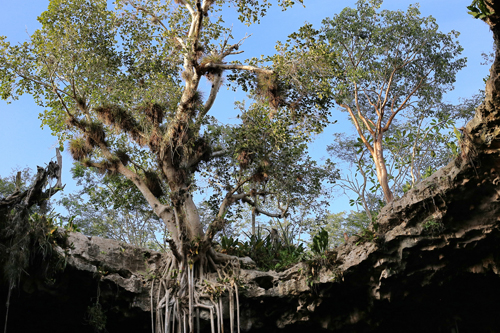
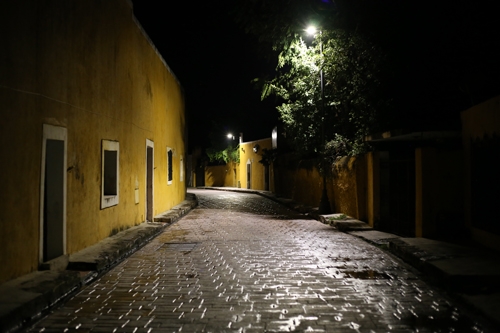
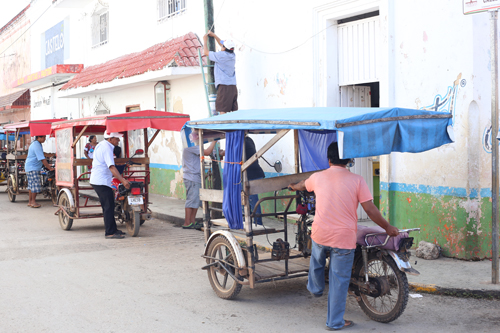

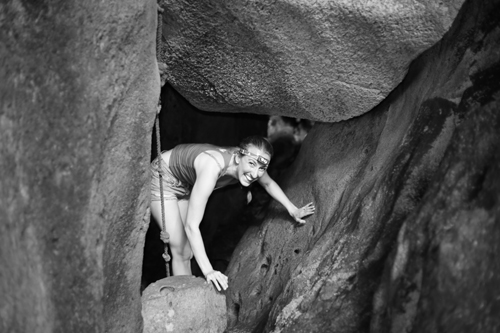
It’s hard to call Chichen Itza and Uxmal “ruins”. They’re hardly ruined at all, still possessing the spirit that I imagine filled the air more than 1,000 years ago. Chichen Itza and Uxmal, both around Merida, were built by the Mayans. Today, Chichen Itza is a buzzing marketplace with local craft makers drawing nearly as much attention as the magnificent towers around them whereas Uxmal is a less well-traveled, but larger ruin. At Uxmal we took the opportunity to climb the steps of a pyramid, eager to get the complete view of an ancient town that seemed to extend back and back. The view was stunning and the climb down the steps, terrifying. The mystery that remains is why the pyramids were built for such narrow feet.

